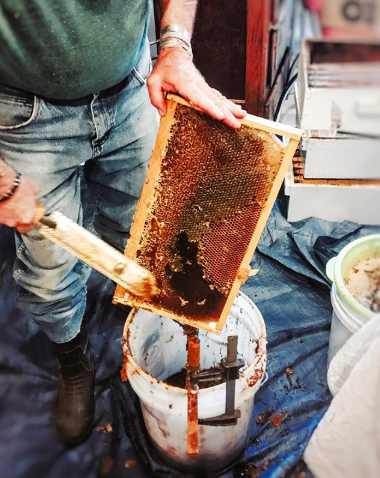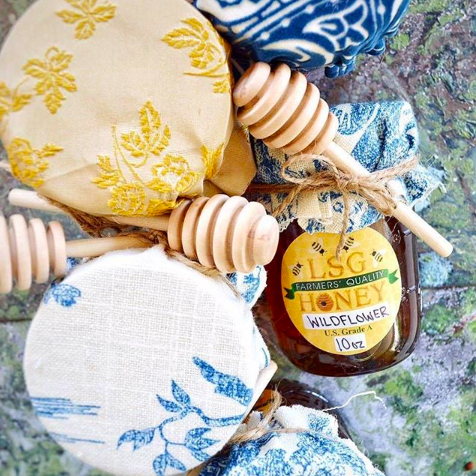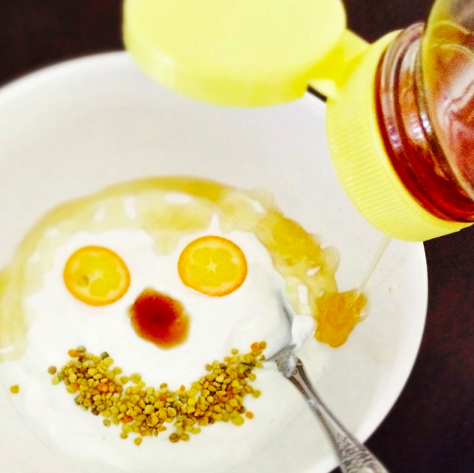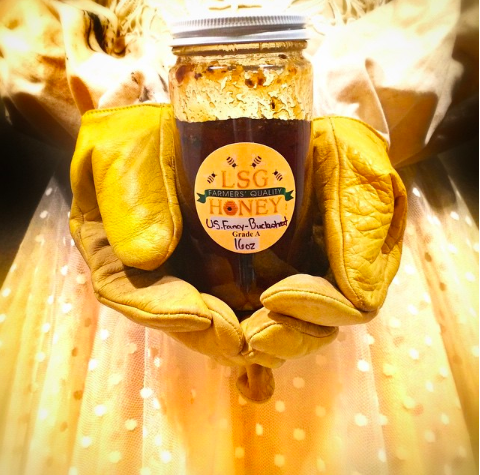How much honey does one bee make in its whole life? The answer may surprise you, unless you’ve met Robin Ghermezi, the apiarist and educator behind LSG Honey.
Robin Ghermezi became a beekeeper after retiring from the tech industry. He’s now been collecting honey for six years, but he still exudes the zeal of a recent convert. At the market, he’s generous with his honey samples, and if you linger long enough at his booth, he might convince you that bees are among the most fascinating creatures on earth.
When I approached his stand at the Playa Vista market on a recent Saturday, he was handing a spoonful of honey to a dazed looking customer.
“Wait,” the man said, “you’re telling me one bee makes a quarter teaspoon of honey…” he looked to the woman by his side in disbelief, “in its whole life?”
Robin grinned as he nodded.
“That means,” the man went on, “that the honey left on my spoon each morning…that’s like, one bee’s whole life’s work?” Robin was still smiling as he reached into a jar, producing a sample of honey for me to taste. It was buckwheat, the color of weak coffee and just a touch bitter: a perfect pairing for stinky cheese. I popped the sample in my mouth and for just a moment, I felt luxurious.
Robin produce more samples for me to try—avocado, wildflower, and a mesquite honey that tasted herbal and faintly smoky—and I lingered in his stall, eavesdropping on the customers beside me. They were strategizing. Robin’s story had transformed the honey in their hands into something valuable-verging-on-precious. They were determined never to waste another drop. Should they use a spoon or a wooden honey dipper? Should they leave the dipper in the honey jar permanently so it wouldn’t need washing—but what about ants?
Robin was unfazed. “One solution,” he said, shrugging, “is to drill a hole in to top of a honey jar, and poke the handle of the dipper stick through it.” Then he handed me a spoonful of lavender honey and began to laugh, conceding that they weren’t the first customers to respond to his fact with awe. At one point, so many customers were concerned about wasted honey, Robin was bringing a drill to the market, tricking-out honey jars so dippers could live in them.
The price of honey had not risen during this exchange, but it had, for me, grown vastly more valuable. For just one taste of honey, a foraging bee spent her days sipping nectar from flowers. She ferried it back to her hive in her tiny crop and, mouth to mouth, passed the nectar to a processor bee. In turn, the processor bee passed the nectar to another processor, mouth to mouth, in an intimate fire-line. Along the way, enzymes from each bee’s crop, mixed with the nectar making it shelf-stable. When the nectar was finally packed into a waxy cell, the bees fanned it with their wings, evaporating excess water, and nectar became honey. Robin tended the hive, carefully, skimmed off just enough honey, to share with us. We can put it in our tea, use it baking, or simply taste it by the teaspoon and marvel.
LSG hives are never treated with chemicals. Their bees collect nectar in nature and produce honey in their hives, one teaspoon at a time, as bees have been doing for a very long time. You can meet Robin and sample LSG honey at the Playa Vista Farmers’ market every Saturday from 9am-2pm.
Aubrey Yarbrough is the Community Development Manager for Farmer Mark. Before moving to LA she ran her own organic farm and cooked on the garde manger station of the award winning Elements restaurant in Princeton, NJ. She has contributed poetry to New American Writing and prose to Edible Jersey.










